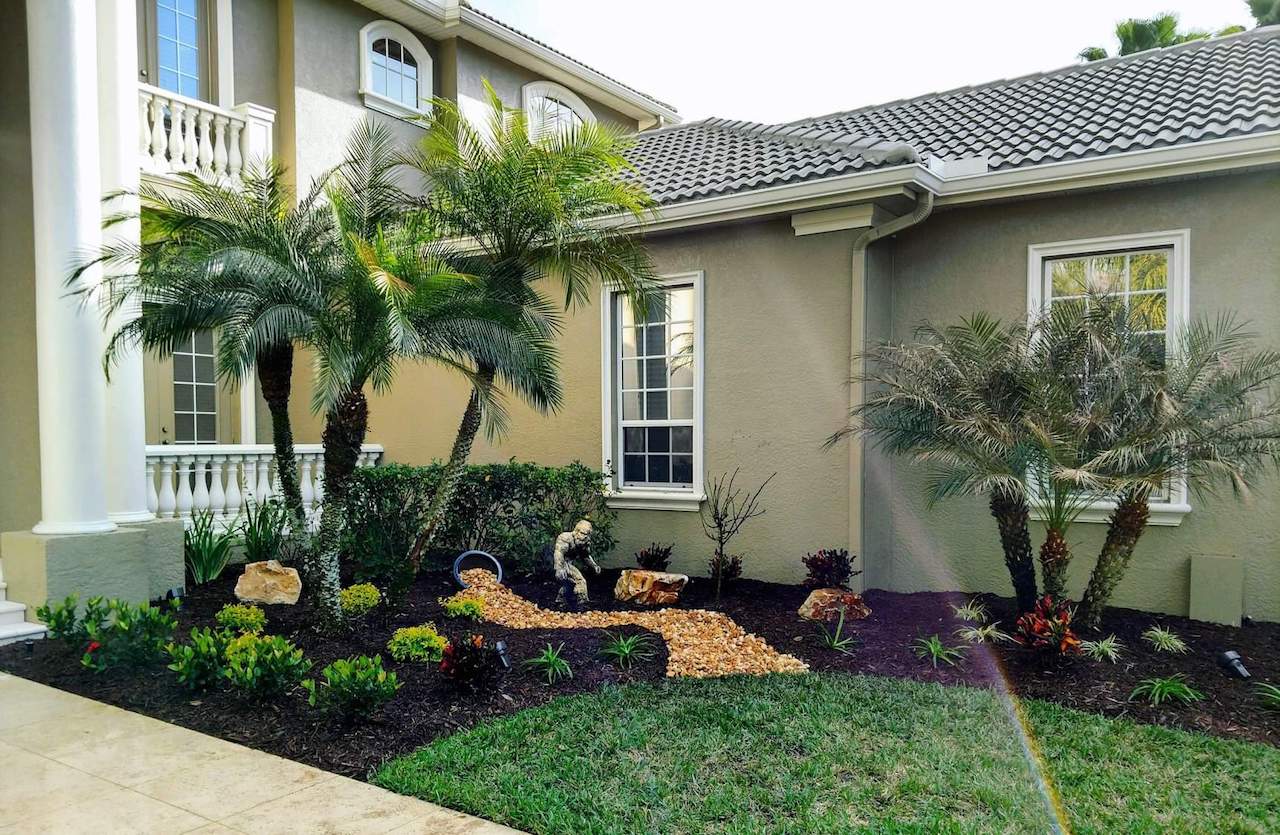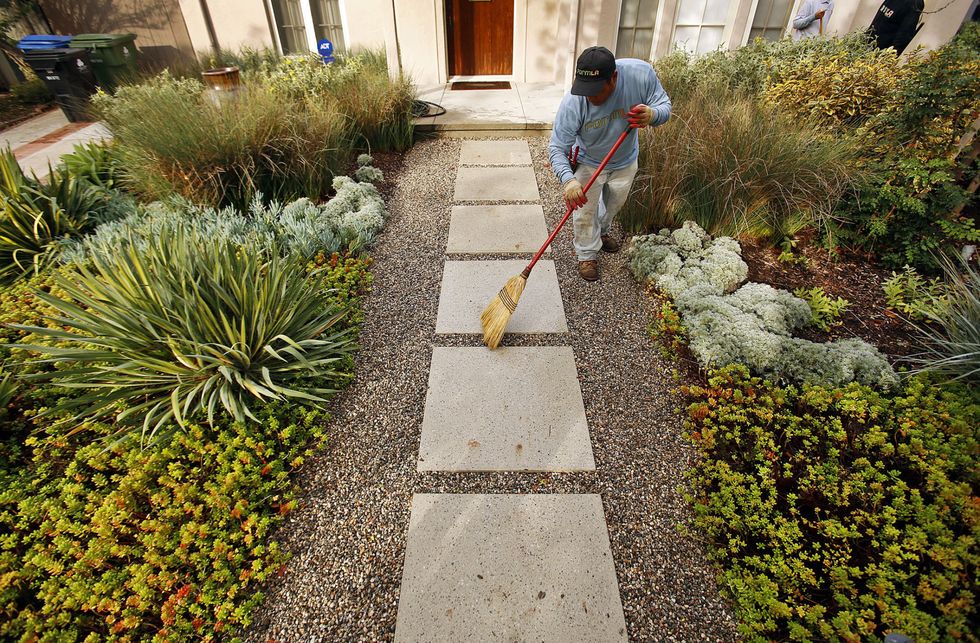A Comprehensive Guide to Designing and Implementing Effective Landscape Design Solutions
The art and science of landscape design expand past simple aesthetics; they entail a thoughtful combination of design concepts, ecological stewardship, and functional implementation. What methods can one utilize to make certain these landscapes not only flourish however likewise thrive in harmony with their surroundings?

Comprehending Landscape Layout Concepts
One could wonder what fundamental elements add to reliable landscape style. At its core, successful landscape design depends upon a number of key concepts that assist the setup and option of components within a space. These concepts include unity, proportion, balance, and rhythm, each offering to create an unified outside environment.
Unity describes the cohesive relationship amongst different components, making certain that they interact visually and functionally. Balance can be achieved through symmetrical or unbalanced arrangements, enabling the landscape to feel secure and welcoming. Percentage includes comprehending the scale of aspects in regard to each various other and the surrounding environment, promoting aesthetic consistency and comfort.

Analyzing Your Outdoor Area
Prior to executing the concepts of landscape layout, a thorough analysis of your exterior area is crucial. This preliminary assessment helps define the extent of your landscape design task and guarantees that your design lines up with the distinct characteristics of your residential or commercial property. Begin by analyzing the measurements of your space, taking accurate dimensions to understand the available location for numerous components such as yards, paths, and patios.
Following, observe the existing functions of your landscape, including topography, soil high quality, and water drainage patterns. These variables dramatically affect plant option and positioning. In addition, assess the sunlight direct exposure across various locations throughout the day, as this will certainly impact the kinds of plants that grow in your yard.
Think about the microclimates produced by frameworks, trees, and other obstacles, as they can affect temperature level and wetness levels. Take note of any type of existing plants or hardscape components that you desire to retain or remove. This extensive evaluation lays the foundation for a efficient and educated landscape design solution, ensuring that your design is not only visually pleasing but sustainable and additionally useful for years to come.
Sustainable Landscaping Techniques
These practices not only advertise eco-friendly equilibrium yet likewise boost the aesthetic and useful value of a landscape. Carrying out effective watering systems, such as drip irrigation, lessens water waste and ensures that plants obtain adequate moisture (Palm Desert Landscaping).

An additional efficient technique is the calculated positioning of hedges and trees to provide natural windbreaks and color, therefore reducing power costs (Palm Desert Landscaping). Rainfall yards can be incorporated into the landscape layout to handle stormwater drainage effectively, filtering system pollutants prior to they get in rivers
Selecting the Right Plants
Selecting the right plants for your landscape is important to accomplishing both visual appeal and environmental harmony. The process starts with an understanding of your regional climate, dirt conditions, and the specific microenvironments within more info here your landscape. Analyzing variables such as sunshine exposure, dampness degrees, and existing vegetations will certainly aid you go to this web-site pick plants that grow in your unique setup.
Consider including indigenous plants, as they are well-adapted to regional problems, call for less maintenance, and support local wildlife. Additionally, picking a varied selection of varieties can enhance biodiversity while reducing the threat of condition and parasite episodes. It is necessary to review the development routines, flowering periods, and seasonal shades of possible plants to develop a dynamic and cohesive landscape.
In addition, consider the intended use the area; as an example, if the area will certainly experience high foot web traffic, choose for resistant ground covers. By attentively picking plants that align with both your ecological requirements and aesthetic goals, you can produce a lasting landscape that not just improves your home yet also adds positively to the surrounding ecological community.

Application and Upkeep Methods
As soon as the best plants have been picked for your landscape, the focus changes to efficient application and continuous upkeep methods. Effective installment starts with correct website prep work, which consists of soil testing to identify nutrient levels and pH, complied with by amending the soil as needed. Meticulously set up plants according to their growth routines and light requirements, making certain ample spacing to advertise healthy and balanced development.
Irrigation is an important element of application. Develop a watering routine that thinks about the particular needs of each plant varieties, readjusting for seasonal modifications. Using drip irrigation systems can enhance water performance and decrease overflow.
Maintenance techniques should be executed to guarantee the long life and vitality of your landscape. Normal tasks include weeding, mulching, and pruning to regulate development and stop disease. Fertilizing ought to be carried out based upon dirt examinations, providing the needed nutrients without over-fertilizing.
Keeping track of for conditions and insects is important; early discovery can stop significant damages. Lastly, seasonal modifications to upkeep regimens, such as preparing and winterizing perennials for spring growth, will certainly ensure that your landscape stays healthy and visually appealing year-round.
Verdict
In final thought, efficient landscaping services require an extensive understanding of design concepts, precise evaluation of exterior areas, and the application of lasting strategies. The selection of suitable plant varieties plays a critical function in improving visual allure and ecological durability - Palm Desert Landscaping. Successful application and continuous upkeep better ensure the long life and vitality of landscapes. By integrating these components, landscapes can be transformed right into beautiful, functional atmospheres that advertise biodiversity and add positively to neighborhood wellness.
One could wonder what foundational elements add to effective landscape design. At its core, successful landscape next design hinges on numerous essential concepts that direct the setup and choice of aspects within a space.Choosing the right plants for your landscape is crucial to attaining both aesthetic charm and environmental harmony. It is important to assess the growth habits, blooming durations, and seasonal shades of prospective plants to produce a cohesive and dynamic landscape.
Once the appropriate plants have been selected for your landscape, the focus shifts to effective execution and continuous maintenance strategies.